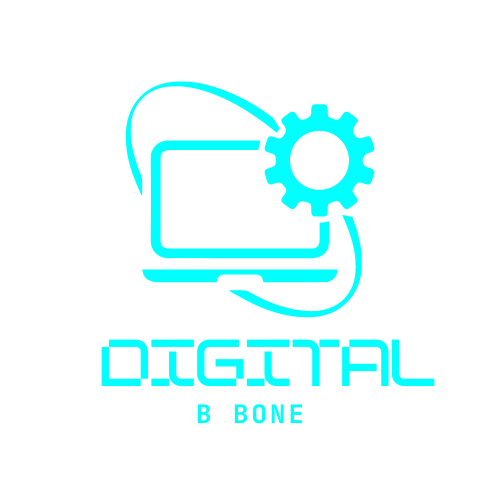Unlocking Business Growth: A Comprehensive Guide about how to grow business with linkedIn
Introduction
In today’s digital age, LinkedIn has emerged as a powerful platform for professionals to connect, network, and grow their businesses. With over 700 million users worldwide, LinkedIn offers a plethora of opportunities for entrepreneurs, startups, and established businesses alike to expand their reach, generate leads, and drive revenue. In this comprehensive guide, we’ll explore actionable strategies to harness the full potential of LinkedIn and propel your business to new heights.
1. Crafting a Captivating Profile:
Headline Optimization

Your LinkedIn headline is the first thing people see when they come across your profile. It should be concise yet descriptive, highlighting your key skills, expertise, and value proposition. For example, instead of simply stating your job title, consider adding a brief tagline or descriptor that showcases what sets you apart
Compelling Summary

Your profile summary is your opportunity to tell your story and showcase your unique value proposition. Use this section to provide an overview of your professional background, achievements, and goals. Aim to strike a balance between professionalism and personality, making it engaging and easy to read
Skills Showcase

LinkedIn allows you to list up to 50 skills on your profile. Choose skills that are relevant to your industry and expertise, and arrange them in order of importance. Endorsements from connections can further validate your skills and expertise, so encourage colleagues and clients to endorse you for relevant skills
Visual Appeal

Visual elements such as a professional profile picture, background photo, and multimedia content can significantly enhance the visual appeal of your profile. Choose a high-quality profile picture that reflects your professionalism, and consider adding a background photo that aligns with your personal brand or industry. Additionally, incorporate multimedia content such as videos, presentations, or portfolio samples to showcase your work and expertise.d
2. Building a Strategic Network
Quality Connections:

Building a strong network on LinkedIn is about quality, not quantity. Focus on connecting with professionals who are relevant to your industry, target market, or career goals. Look for mutual connections or common interests to personalize your connection requests and increase acceptance rates.
Personalized Outreach:

When sending connection requests, always include a personalized message to introduce yourself and explain why you’re interested in connecting. Mention any mutual connections or common interests to establish rapport and increase the likelihood of acceptance.
Group Engagement:

LinkedIn groups are a valuable resource for networking, sharing knowledge, and engaging with like-minded professionals. Join groups related to your industry, interests, or target market, and actively participate in discussions by sharing insights, asking questions, and offering advice. This can help you expand your network and establish yourself as a thought leader in your field.
Leveraging Alumni and Company Networks:
Take advantage of LinkedIn’s alumni and company pages to connect with former classmates, colleagues, and employees. Alumni networks can be particularly valuable for networking, job hunting, and mentorship opportunities, while company pages allow you to stay connected with current and former colleagues and showcase your affiliation with reputable organizations.
3. Curating Compelling Content:
Know Your Audience:

Before creating content, it’s essential to understand your target audience’s needs, preferences, and pain points. Conduct market research, engage with your audience on LinkedIn, and monitor industry trends to gain insights into what resonates with them.
Content Strategy:
Develop a content strategy that aligns with your business objectives and target audience. Determine the topics, formats, and posting schedules that will best resonate with your audience and support your overall marketing goals.
Thought Leadership:
LinkedIn is an ideal platform for establishing yourself as a thought leader in your industry. Share original insights, industry trends, and actionable advice to position yourself as a trusted authority and resource for your audience.
Multimedia Content:

Diversify your content strategy by incorporating multimedia elements such as images, infographics, videos, and SlideShare presentations. Visual content tends to be more engaging and shareable, making it an effective way to capture your audience’s attention and convey your message.
4. Harnessing LinkedIn's Publishing Platform:
Article Creation:

LinkedIn’s publishing platform allows you to write and publish long-form articles on topics of interest to your audience. Leverage this feature to share in-depth insights, industry analysis, case studies, or thought leadership pieces.
SEO Optimization:
To maximize the visibility of your articles, optimize them for search engines by incorporating relevant keywords, headlines, and meta descriptions. This will help improve their discoverability and attract more readers.
Promotion Strategy:
Once you’ve published an article, promote it across your LinkedIn network by sharing it as a status update or in relevant LinkedIn groups. Encourage engagement by asking questions, soliciting feedback, or inviting readers to share their thoughts.
Engagement and Interaction:

Foster discussions and interactions around your articles by responding to comments, thanking readers for their feedback, and engaging in meaningful conversations. This will help you build rapport with your audience and establish yourself as a valuable contributor to the LinkedIn community.
5. Strategic Advertising
Clear Objectives:

Before launching an advertising campaign on LinkedIn, define clear objectives that align with your overall marketing goals. Whether you’re looking to increase brand awareness, generate leads, or drive conversions, having a clear objective will guide your advertising strategy and measurement.
Targeted Campaigns:
One of LinkedIn’s key advantages is its robust targeting options, which allow you to reach specific audiences based on demographics, job titles, industries, interests, and more. Take advantage of these targeting options to tailor your campaigns to the right audience segments.
Ad Formats:
LinkedIn offers a variety of ad formats to suit different objectives and preferences. Sponsored content allows you to promote your organic LinkedIn posts to a larger audience, sponsored InMail enables you to send personalized messages to targeted LinkedIn users, and display ads appear on the side or bottom of LinkedIn pages.
Continuous Optimization:

Monitor the performance of your LinkedIn ads regularly and make adjustments based on key metrics such as click-through rates, conversion rates, and return on investment (ROI). Test different ad creatives, targeting options, and messaging to optimize your campaigns for maximum effectiveness.
6. Personalized Engagement:
Timely Responses:

Promptly respond to messages, connection requests, and inquiries from your LinkedIn network. Whether it’s a potential client reaching out with a question or a colleague requesting assistance, responding in a timely manner demonstrates professionalism and attentiveness.
Value-added Interactions:
When engaging with leads and prospects on LinkedIn, focus on providing value and personalized solutions to their needs. Offer insights, advice, or resources that demonstrate your expertise and showcase the value you can bring to their business.
Free Offerings:
Consider offering free resources, consultations, or trials to prospects as a way to showcase your expertise and build trust. This could include downloadable guides, webinars, or one-on-one consultations tailored to their specific needs and challenges.
Relationship Building:

Nurturing relationships is key to long-term success on LinkedIn. Follow up with connections regularly, engage with their content, and look for opportunities to collaborate or support each other’s goals. Building genuine relationships based on mutual respect and value will help you establish a strong network of allies and advocates on LinkedIn.
7. Showcasing Social Proof:
Client Testimonials:

Positive testimonials from satisfied clients can be a powerful form of social proof that validates your expertise and credibility. Collect testimonials from clients who have had positive experiences working with you and showcase them on your LinkedIn profile or website.
Case Studies:
Case studies provide real-world examples of how your products or services have helped clients overcome challenges and achieve their goals. Share success stories and case studies that highlight specific results, benefits, and outcomes to demonstrate the tangible value you can deliver.
Visual Evidence:

Incorporating visual elements such as images, videos, and infographics can enhance the credibility and impact of your testimonials and case studies. Consider including screenshots, charts, or before-and-after images to illustrate key points and make your content more visually compelling.
8. Data-Driven Optimization:
Performance Analysis:

Regularly analyze the performance of your LinkedIn profile, content, and advertising efforts using LinkedIn Analytics and other tracking tools. Pay attention to key metrics such as engagement, reach, leads, and conversions to gauge the effectiveness of your LinkedIn strategy.
Key Metrics:
Identify the most relevant metrics for measuring the success of your LinkedIn efforts based on your objectives and goals. This could include metrics such as profile views, connection requests, engagement rates, click-through rates, and conversion rates.
Iterative Approach:

Use insights from data analysis to refine and optimize your LinkedIn strategy over time. Experiment with different tactics, content formats, and targeting options to see what resonates best with your audience and drives the desired results. Continuously monitor performance, make adjustments as needed, and iterate on your approach to achieve ongoing improvement and success.
Conclusion:
LinkedIn offers a wealth of opportunities for businesses to grow, connect with their target audience, and drive results. By crafting a captivating profile, building a strategic network, curating compelling content, leveraging LinkedIn’s publishing platform, and harnessing the power of advertising, personalized engagement, social proof, and data-driven optimization, you can unlock the full potential of this powerful platform and propel your business to new heights. Remember, success on LinkedIn requires dedication, strategy, and ongoing effort. Stay consistent, adapt to changes, and continue to innovate to maximize your impact and achieve your business goals. for Transform Your Digital Presence with Top-tier Services digitalbbone
